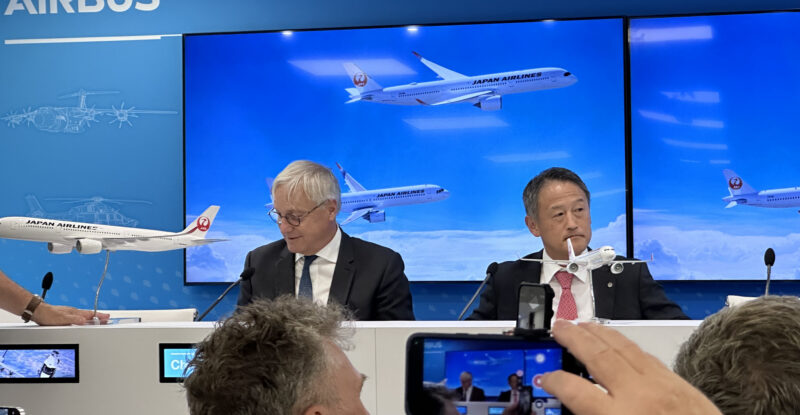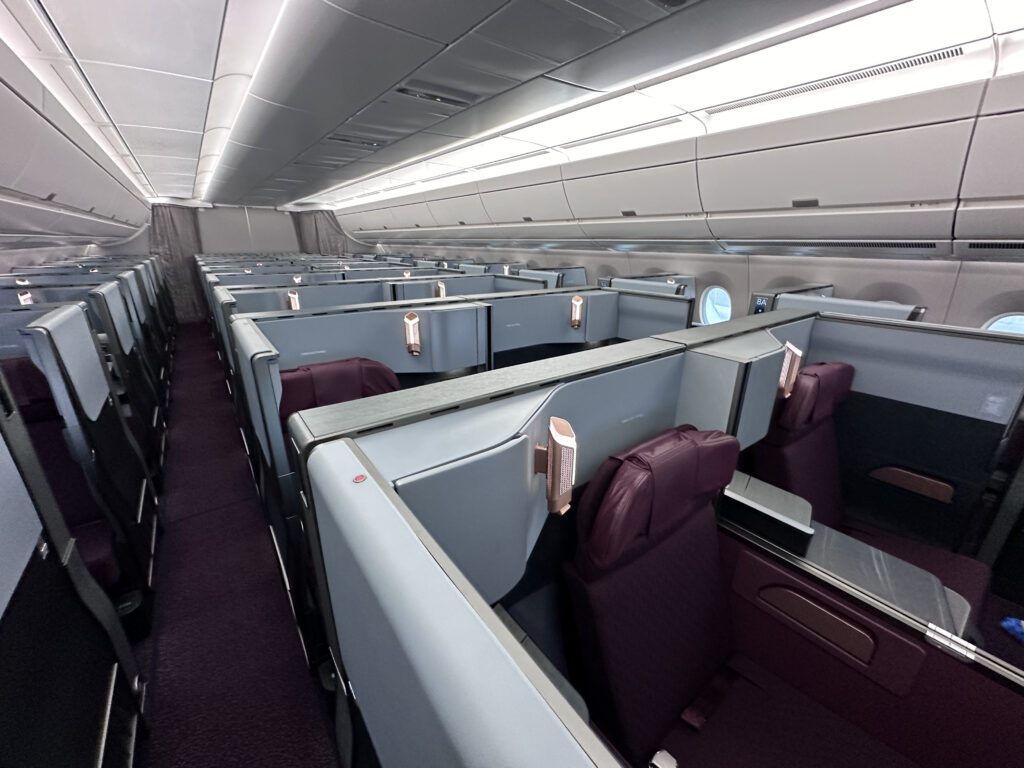FARNBOROUGH — If the absence of flying activity at Boeing this year was understandable, the very quiet show for Airbus was somewhat more surprising. Record sales for its flagship aircraft, especially the A320 and A350 families, combined with supply chain constraints (especially in interiors and engines) to mean that, for most airlines, what’s left on the Airbus shelf is largely a choice of A220s or A330neos.
Virgin Atlantic plumped for the latter, bringing its 40th anniversary A330neo to Farnborough to announce the purchase of seven more A330-900s as part of plans to retire its older A330-300 aircraft, which date roughly a decade back.
A320neo family aircraft — in this case A321neos — were, however, available for Japan Airlines, which signed for 11. JAL also added 20 new A350-900 aircraft for its international routes, to add to its existing international A350-1000 fleet and domestic A350-900 aircraft. A further single A350-900 is also on order to replace the aircraft involved in the January 2024 crash at Tokyo Haneda. Deliveries are to start in 2028.
Nakagawa Yukio, JAL executive officer and senior vice president for procurement, explained that the A321neos are intended to replace the Boeing 767-300ER aircraft JAL uses domestically, of which the airline has roughly two dozen still in operation and for which Nakagawa said there “is no direct replacement”.
Whither, then, a middle-of-the-market aircraft so often discussed a decade ago? JAL is in an unusual position for 767 replacement in that it has enough longhaul 787-8 aircraft — in addition to those that it hived off to long-haul low-cost subsidiary Zipair Tokyo — around ten years old that it could use to bookend the A321neos around either side of the 767-300ER’s capacity with a domestic reconfiguration.
If the A321neos remain targeted at the domestic market, the question of whether these could later become A321XLRs is moot, but Nakagawa did call the long-range narrowbody “very interesting”.
Airbus has long offered airlines flexibility to move between models within its families of aircraft, which not only helps with changing demand requirements but also enables airlines to make firm orders for the smaller members of the family (like the A320neo, which are cheaper than an A321neo) and then wait until significantly closer to delivery dates to make the larger final payment for a larger aircraft or one with the extra-range upgrades.
Runway Girl Network asked Airbus’ commercial aircraft business CEO, Christian Scherer, about the lead time for the decision to change between various A320neo family models in the gap between order and delivery.
“I can’t give you a precise answer,” Scherer told RGN. “But considering the strength of our backlog, which now extends into 2031, we have ample time for airline customers to make the determination as to whether or not they want to quote-unquote, upgrade to the XLR capability or not. As to what’s the incompressible lead time, I can’t give you that answer today because the question will become relevant sometime in 2028. So what’s the rush? That’s the privilege of having that very, very solid order backlog: ample time for us to find with our customers.”
Nakagawa also told RGN that JAL has yet to select interiors and seats for the new aircraft.
JAL’s current longhaul A350-1000s have a custom Safran Seats UK first class and launched the Unity platform in business, which RGN recently flew, as well as diving into the latest on Unity during a visit to the seatmaker’s Cwmbran factory earlier this year. Nakagawa wouldn’t be drawn on delivery dates for the next aircraft, noting that “not only Japan Airlines, I believe — almost all airlines are affected [by] supply chains, especially for the interior. We, Japan Airlines, strive to manage the situation in order to meet deliveries.”
JAL has three A350-1000s currently flying, and in early April Safran was finishing up the business class seats for shipset 6, with the first class seats already having departed for Toulouse. It’s notable — and a little concerning from a supply chain and production point of view — that even in late July, JAL wasn’t in a position to give a delivery date for aircraft number 4.
Related Articles:
- Diehl Aviation pulls levers to tackle supply constraints: CEO Schuler
- Inside Airbus’ Airspace 2025 bin changes, including retrofits
- JAL A350 interiors supply chain issues raise spectre of delays in 2024
- Recaro Aircraft Seating CEO flags continued shortage in IFE parts
- Safran’s first Unity: a strong experience in JAL A350 business
Featured image credited to John Walton













